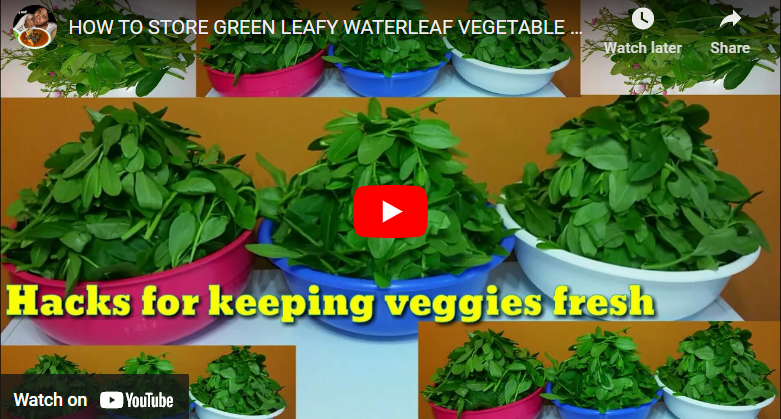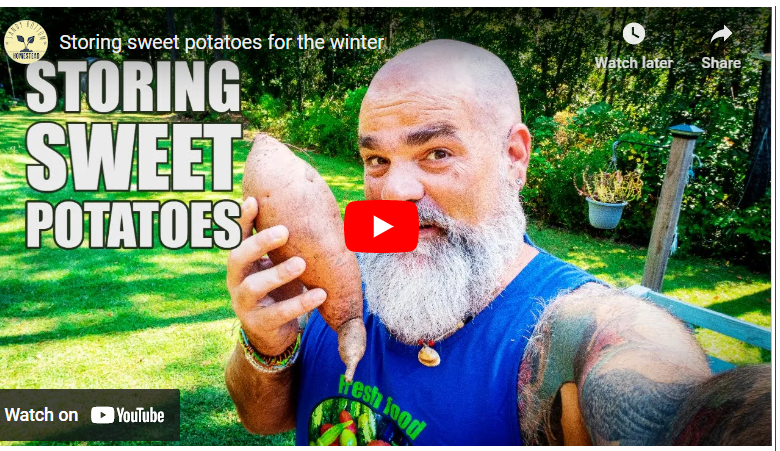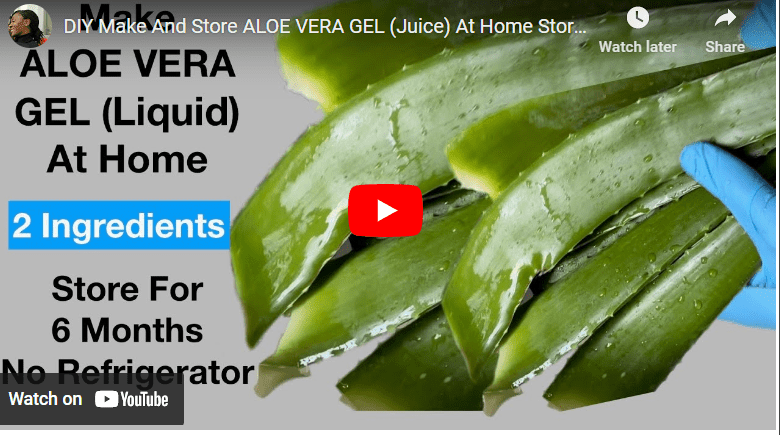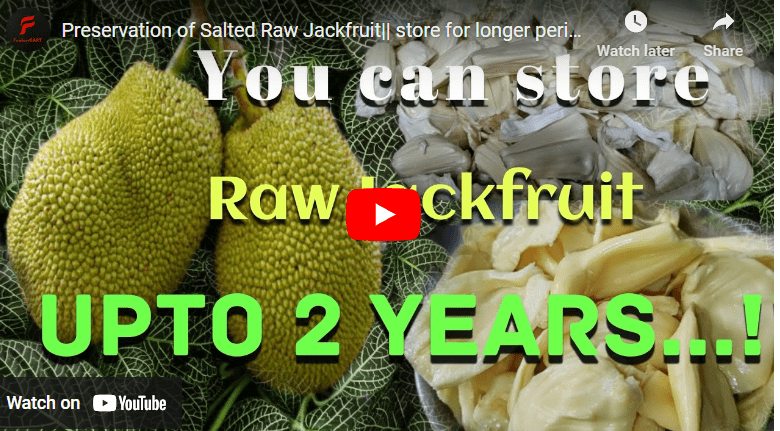Water leaf, also known as talinum triangulare, is a leafy vegetable that is popular in many parts of the world, particularly in West Africa. It is known for its numerous nutritional benefits, including being a rich source of vitamins A, C, and E, calcium, and iron.
Despite its popularity, water leaf has a short shelf life and can easily spoil if not preserved properly. This can result in a significant loss of nutrients and a waste of resources for farmers and consumers alike.
Preserving water leaf for long-term storage involves drying the water leaf in the sun, removing any dirt and debris, and then storing it in an airtight container. To begin, spread the water leaf onto a drying rack and ensure that it is exposed to direct sunlight.
Allow the leaves to dry for several days, turning them occasionally to ensure even drying. Remove any dirt and debris from the leaves before packaging them in a tightly sealed container. Place the container in a cool, dry place to ensure maximum longevity.
How To Preserve Water Leaf
To effectively preserve water leaf, it’s important to understand its characteristics. Water leaf is a succulent plant that belongs to the Portulacaceae family. The leaves are triangular in shape and have a slightly spongy texture. They are usually green in color, but some varieties may have a reddish tint.
Read Also: How To Preserve Vegetables For Long Time Storage
Water leaf is a highly nutritious vegetable and is a good source of essential vitamins and minerals. It contains high levels of vitamins A, C, and E, as well as calcium and iron. The leaves also have a high water content, which makes them a great addition to salads or soups.
There are several varieties of water leaf, with some being more common in certain regions than others. For instance, in Nigeria and other West African countries, the talinum triangulare variety is the most commonly consumed type of water leaf.
Read Also: How To Preserve Tiger Nut For Long Time Storage
When selecting water leaf for preservation, it’s important to choose healthy, fresh leaves. Look for leaves that are firm and vibrant in color, with no signs of discoloration or wilting. Avoid leaves that are bruised, torn, or have insect damage.
Methods of Preserving Waterleaf
There are several techniques you can use to preserve water leaf and extend its shelf life. Below are some of the methods of preserving waterleaf.
Read Also: How To Preserve Watermelon For Long Time Storage
Refrigeration
One of the easiest ways to preserve water leaf is by refrigerating it. Simply wrap the leaves in a paper towel and store them in a plastic bag in the refrigerator. This will help to keep the leaves fresh for several days.
Read Also: How To Preserve Sweet Potatoes For Long Time Storage
Drying
Drying is another popular method for preserving water leaf. To dry the leaves, spread them out on a clean surface and allow them to air dry for a few days until they become crispy. Once the leaves are completely dry, store them in an airtight container in a cool, dry place.
Freezing
Freezing is another effective method for preserving water leaf. To freeze the leaves, wash them thoroughly and blanch them in boiling water for a few seconds. Then, transfer the leaves to airtight containers or freezer bags and store them in the freezer.
Read Also: How To Preserve Scent Leaf For Long Time Storage
Blanching
Blanching is a process of boiling the water leaf for a short period to stop the enzyme action and preserve the color and nutritional value. After blanching, immerse in ice-cold water to stop cooking.
Using Preservatives
There are several food preservatives such as sodium benzoate, sodium metabisulfite, and citric acid that can be used to extend the shelf life of water leaf.
Factors Affecting the Preservation of Waterleaf
To effectively preserve water leaf, it’s important to understand the factors that can affect its preservation. Here are some of the key factors to keep in mind:
Read Also: How To Preserve Ripe Plantain For Long Time Storage
Shelf life
Water leaf has a relatively short shelf life when compared to several other vegetables. It can start to spoil within a few days if not stored properly. This makes it important to preserve the vegetable as soon as possible after harvesting.
Causes of spoilage
There are several factors that can cause water leaf to spoil. Exposure to air, moisture, and sunlight can all contribute to spoilage. In addition, microorganisms like bacteria and fungi can grow on the leaves and cause them to rot.
Read Also: How To Preserve Rice from Weevils
Environmental factors
The environment in which water leaf is stored can also affect its preservation. High temperatures and humidity can speed up spoilage, while cool, dry environments can help to slow it down.
Best Practices for Preserving Waterleaf
In addition to the preservation techniques discussed in the previous section, there are several best practices you can follow to preserve water leaf effectively. Here are some tips:
Read Also: How To Preserve Onions For Long Time Storage
Harvesting
Harvest water leaf in the morning when the leaves are still dewy and fresh. Avoid harvesting the leaves when they are wet or after rainfall, as this can lead to spoilage.
Washing
Wash the leaves thoroughly with clean water to remove dirt and debris before preserving. You can also add a few drops of vinegar or lemon juice to the water to help kill bacteria and fungi.
Read Also: How To Preserve Okra For Long Time Storage
Drying
It’s important to dry the leaves completely before preserving them. Excess moisture can contribute to spoilage, so use a clean kitchen towel or paper towel to pat the leaves dry after washing.
Storage
Store the water leaf in airtight containers or plastic bags to prevent exposure to air, moisture, and sunlight. Label the container or bag with the date of preservation to keep track of the shelf life.
Read Also: How To Preserve Oha Leaves For Long Time Storage
Temperature and humidity
Store the water leaf in a cool, dry place away from direct sunlight. Avoid storing the vegetable in areas that are too warm or humid, as this can speed up spoilage.
Rotation
Rotate your water leaf stock regularly to ensure that the oldest leaves are used first. This will help prevent waste and ensure that you always have fresh water leaf on hand.
Read Also: How To Preserve Green Peppers For Long Time Storage
Uses of Preserved Water Leaf
Preserved water leaf can be used in a variety of dishes, from soups and stews to salads and sauces. Here are some ideas for using preserved water leaf:
Soups And Stews
Preserved water leaf is perfect for adding to soups and stews, as it can help to thicken the broth and add a flavorful, nutrient-rich element to the dish. Simply add the preserved leaves to the pot and cook until heated through.
Read Also: How To Preserve Kiwi For Long Time Storage
Sauces
Preserved water leaf can also be used to make sauces, such as pesto or chimichurri. Simply blend the preserved leaves with garlic, olive oil, and your preferred seasonings to create a flavorful and nutritious sauce.
Salads
Preserved water leaf can be used as a topping or ingredient in salads. Simply chop the preserved leaves into bite-sized pieces and add them to your favorite salad recipe for an extra burst of flavor and nutrition.
Read Also: How To Preserve Locust Beans For Long Time Storage
Smoothies
Preserved water leaf can be blended into smoothies to add a nutrient boost. Simply add a handful of preserved leaves to your favorite smoothie recipe and blend until smooth.
Side Effects Of Water Leaf Juice
Water leaf is a popular vegetable in many parts of the world due to its nutritional value and health benefits. It can be consumed in various forms, including as juice.
However, like any other food or drink, water leaf juice may have some side effects. Here are some possible side effects of water leaf juice:
Read Also: How To Preserve Green Peas For Long Time Storage
Digestive Issues
Some people may experience digestive issues after consuming water leaf juice, such as bloating, gas, or diarrhea. This could be due to the high fiber content of water leaf, which may be difficult to digest for some individuals.
Allergic Reactions
In rare cases, some people may be allergic to water leaf and may experience allergic reactions such as hives, swelling, or difficulty breathing after consuming water leaf juice.
Read Also: How to Preserve Irish Potatoes For Long Time Storage
Interference With Medication
Water leaf juice may interfere with certain medications, such as blood thinners, by affecting the blood’s clotting ability. Therefore, individuals taking such medications should consult with their healthcare provider before consuming water leaf juice.
Overconsumption
Overconsumption of water leaf juice may lead to hypokalemia, a condition characterized by low levels of potassium in the blood. This could lead to muscle weakness, cramps, and irregular heartbeats.
Read Also: How To Preserve Jackfruit For Long Time Storage
Contamination
If water leaf is not properly washed and handled, it may become contaminated with harmful bacteria, such as E.coli or Salmonella. This could lead to foodborne illness and associated symptoms such as fever, vomiting, and diarrhea.
How To Cut Water Leaf
Cutting water leaf properly can help to preserve its freshness and nutritional value. Here’s how to cut water leaf:
- Rinse the water leaf leaves with clean water and pat them dry with a paper towel.
- Remove the stems by cutting them off with a knife.
- Cut the leaves into the desired size and shape for your recipe. For example, you may want to chop the leaves finely for use in soups or stews, or leave them in larger pieces for use in salads or stir-fries.
- Store the cut water leaf in an airtight container in the refrigerator until you are ready to use it.
Read Also: How To Preserve Lettuce For long Time Storage
Water Leaf For Skin Care
Water leaf contains a variety of nutrients and antioxidants that can be beneficial for the skin. Here are some ways you can use water leaf for skin care:
Read Also: How To Preserve Green Beans For Long Time Storage
Facial Mask
Mix water leaf juice with honey and apply it to your face as a mask. Leave it on your face for 10-15 minutes before rinsing off with warm water. This can help to moisturize and rejuvenate the skin.
Bath Soak
Add water leaf leaves to your bathwater to help soothe and soften the skin. The nutrients in the water leaf can help to nourish and hydrate the skin.
Read Also: How to Preserve Ogbono For Long Storage
Benefit Of Water Leaf Juice
Water leaf juice can provide a range of health benefits due to its nutritional content. Here are some potential benefits of water leaf juice:
Boosts Immunity
Water leaf is rich in vitamin C, which is essential for a healthy immune system. Drinking water leaf juice can help to boost your body’s defenses against infections and diseases.
Promotes digestion
Water leaf contains fiber, which can help to promote healthy digestion and prevent constipation.
Read Also: How To Preserve Lemon For Long Time Storage
Lowers Blood Pressure
Water leaf contains potassium, which is essential for regulating blood pressure. Drinking water leaf juice may help to lower high blood pressure levels.
Supports Bone Health
Water leaf is rich in calcium, which is important for strong bones and teeth. Drinking water leaf juice can help to support bone health and prevent conditions such as osteoporosis.
Read Also: How To Preserve Ginger For Long Time Storage
Conclusion
From our discourse, you are now familiar with the different methods of preserving waterleaf. These methods can help you extend the shelf life of water leaf and maintain its nutritional value. However, it’s important to keep in mind that each method may affect the taste and texture of the vegetable differently. Experiment with different techniques to find the one that works best for you.




